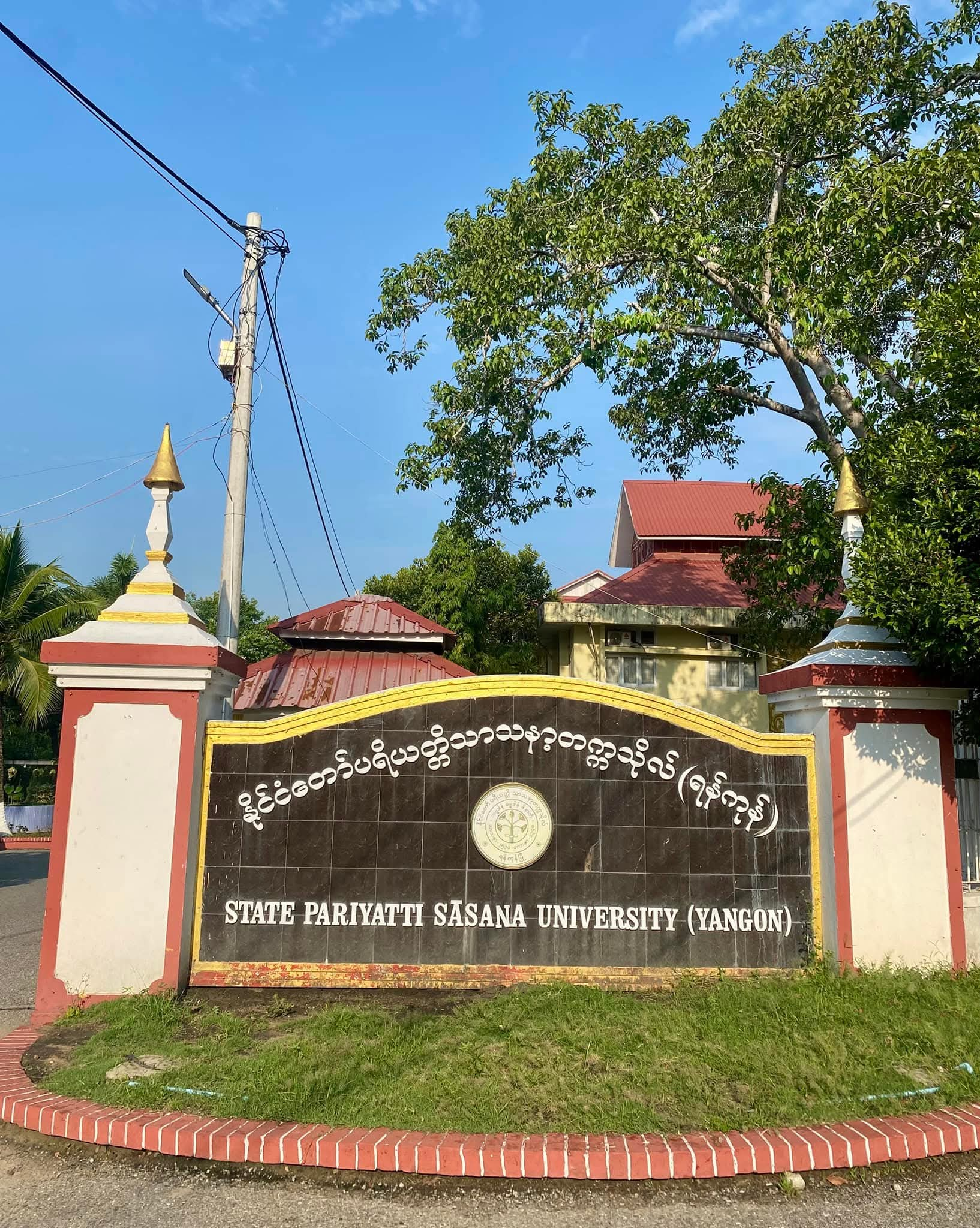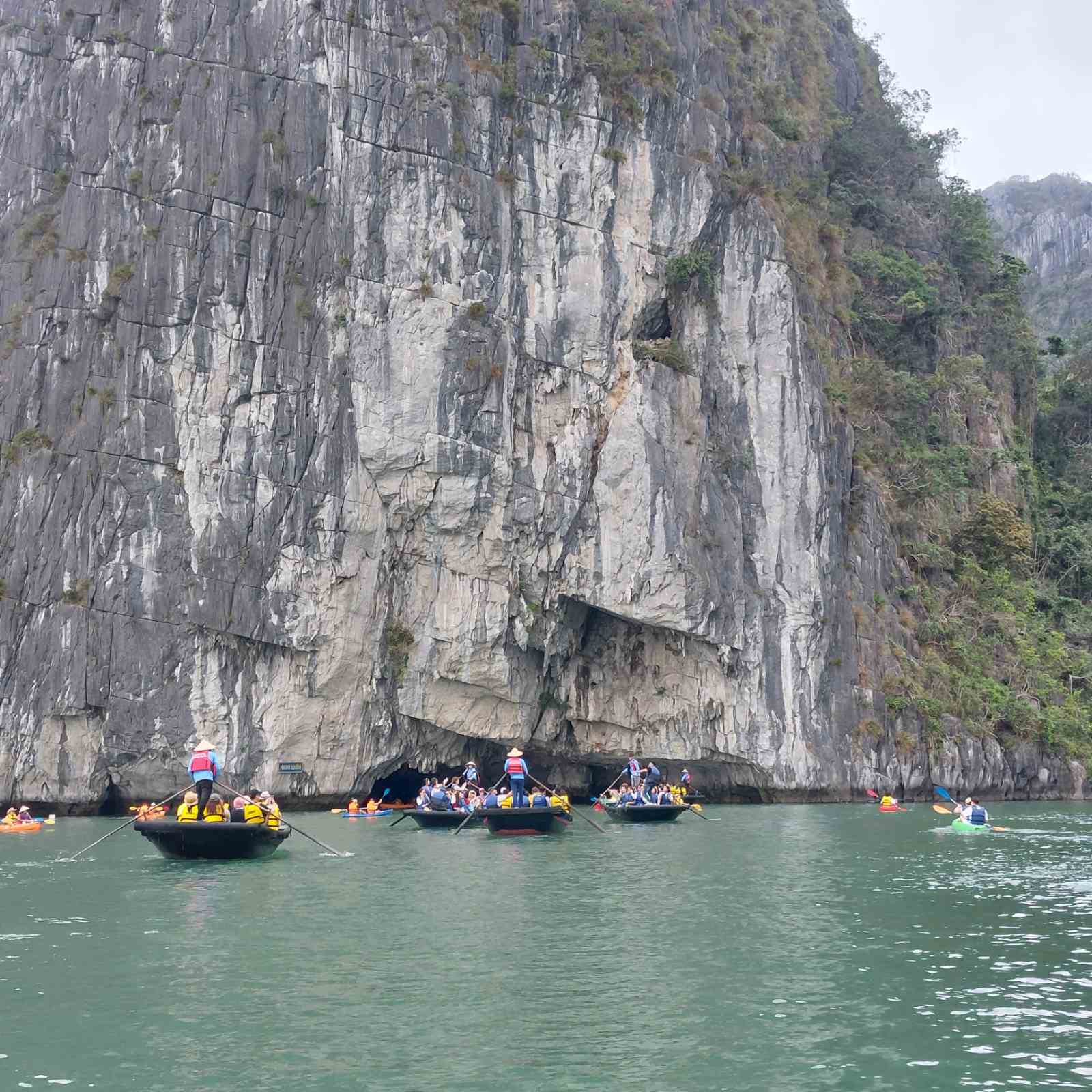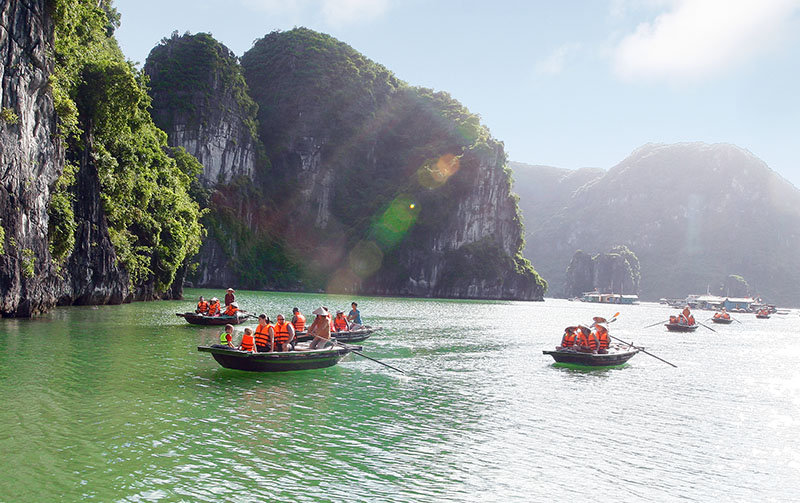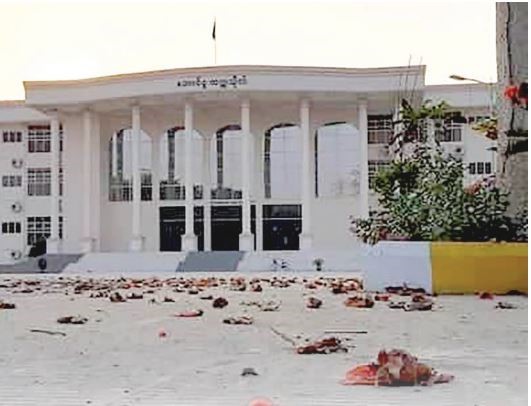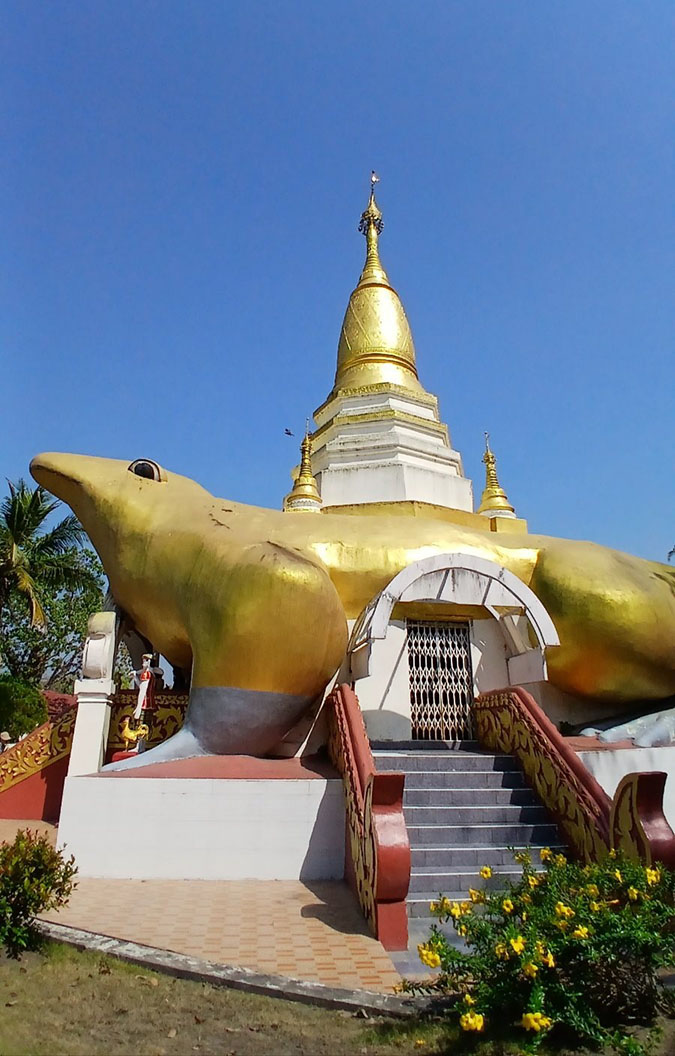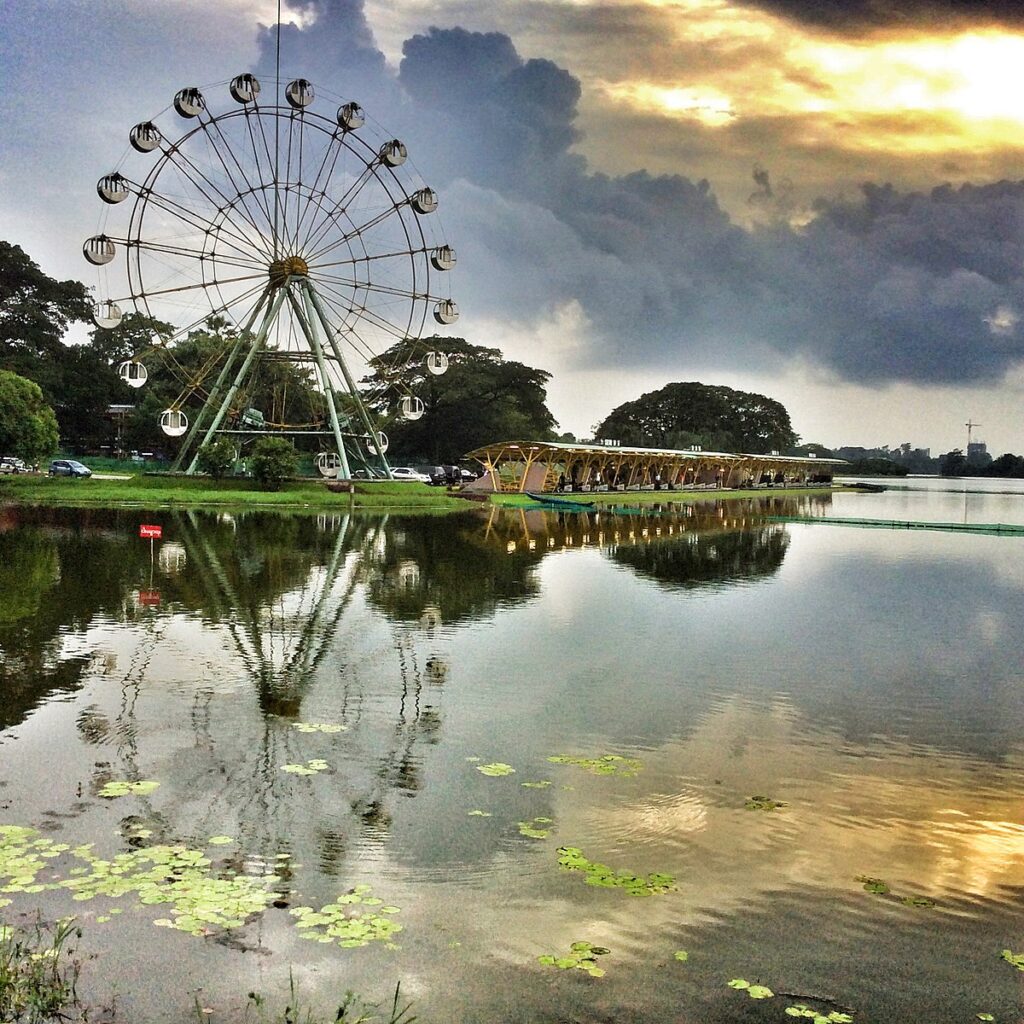Inya Lake
Posted_Date
Image
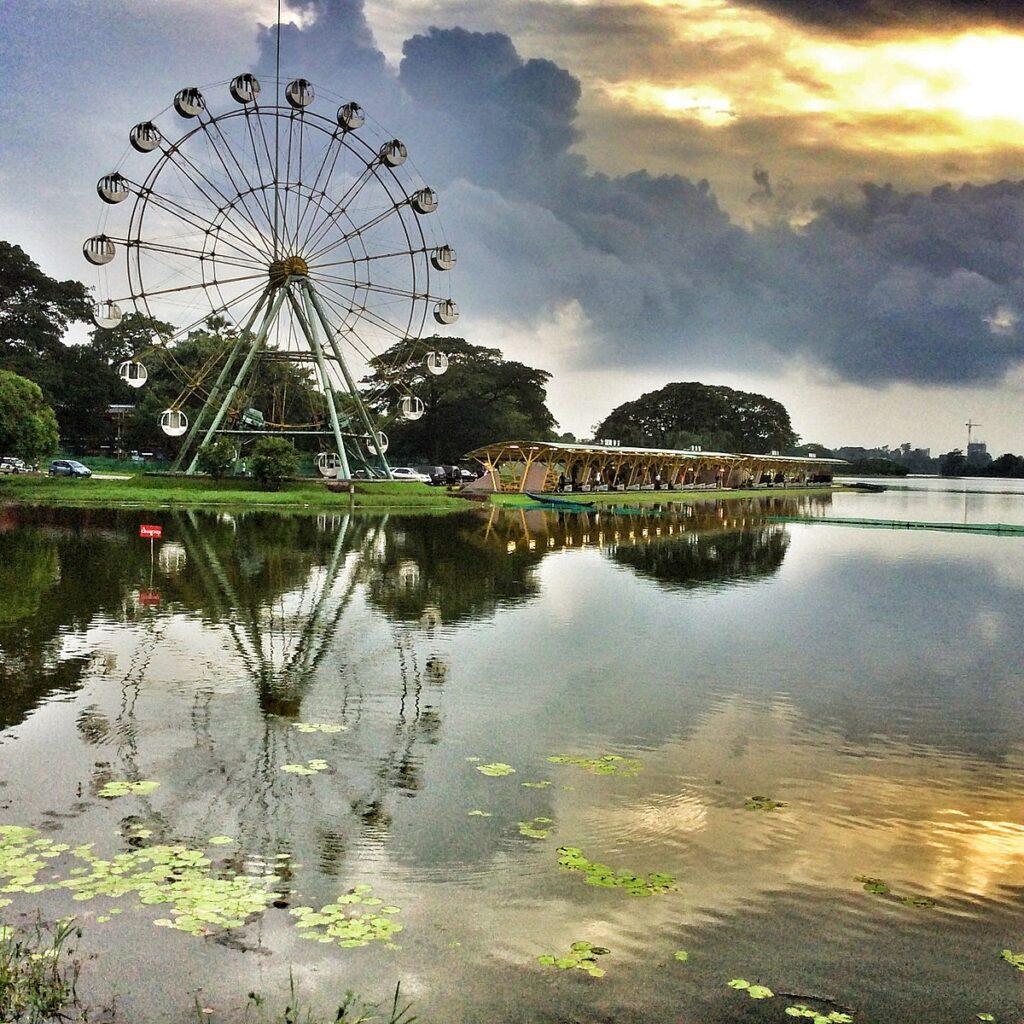
Body
Inya Lake is located adjacent to Yangon University in Kamayut township, six miles (10 kilometres) north of downtown Yangon. It acquired a reputation for its vast stretch of water studded with pleasant, wooded islets. Due to its breathtaking beauty and serenity, it turns out to be not only a haunt of holiday-makers but also a tryst for lovers.
This lake is named “အင်းယား’’ after its elongated shape. It was called “Victoria Lake” after Queen Victoria when Myanmar fell under British rule. It was, at that time, also known by the name of “Kokkhine Lake”’, for it lay close to Kokkhine Village. In ancient times, the Mons who lived near the lake called it ‘Kamayut’ meaning ‘Lake of Jewels’ because it served as an inexhaustible food resource for the Mon villages in its neighbourhood.
The history of Inya Lake dates back to before the Christian era. In those ancient days, Lower Myanmar was covered by shallow water with small laterite islets scattered above water, some of which were small fishing villages. By the second century BC, a severe earth-quake hit Lower Myanmar and the water covering it receded, leaving behind some geomorphological features such as the Hlaing River, Yangon River, Ngamoeyeik Creek and other rivulets, creeks and lakes on newly-formed alluvial plains. Inya Lake is said to be one of the remaining lakes from that time. It is said that, at that time, this lake was an elongated depression 50 feet below the sea level, surrounded by low laterite ridges. It was then a natural lake connected with the Hlaing River by a creek. So it was affected by the tide. However, the British built Pyay Road by damming this lake with embankments. Since then, it turned into a land-locked lake with a bund of 0.5 mile on the western side and a bund of 1.2 miles on the eastern side. In 1878, Kandawgyi (Royal Lake) could no longer supply adequate water to Pazundaung and other downtown areas of Yangon. So the British government turned Inya Lake into a reservoir to supply enough water to the bigger Yangon. (Later, as the population of Yangon grew, Hlawga Lake and Gyobyu Lake had to be used to supply more water.)
In the early colonial period, Inya Lake lay near Kamaryut village which was well outside Yangon City. Yangon University was built only in 1920. In those days, for its remoteness from the downtown area, the thickly wooded Inya Lake was rumoured to be a haunt of tigers and man-eating water ogres or a den of dacoits. Therefore, some chicken-hearted students avoided visiting it even during the daytime. A few brave students, however, used to go there for a swim on some evenings. It is known that a student from Yangon University drowned to death in this lake in 1926. So, from then on, the university students were forbidden from swimming in it.
In 1923, the Yangon University Boat Club was formed and its office was situated on a piece of land jutting out into the lake on the southern bund of Inya Lake. It was chaired by a British advocate Mr Edgar, who later became a law professor, at Yangon University. He was an executive member of the Cambridge and Oxford University Boat Clubs while living in England. From the time of the founding of this club, boat races were held in the lake every year. The days of the boat races were happy occasions for Yangon University students. Thus, Inya Lake was more frequently visited by them.
During the colonial period, some wooded islets in this lake were a haven for some British pensioners and wealthy Chinese men who wanted to live peacefully in their old age. It is said that in 1930, Maurice Collice, a world-famous Irish writer, paid a short visit to the house of a retired Irish military officer who lived on a small island, from which the Shwedagon pagoda some distance to the south was visible and that, during his stay there, he visited GH Luce living near the southern bund of the lake, who was then serving as History Professor of Yangon University.
During the post-independence period, Yangon was extended in the northerly direction. Inya Lake was, therefore, encircled by populated areas. Some prominent historical buildings are found scattered around the shores of the lake. The Convocation Hall, the earliest building of Yangon University, was constructed in 1922, Inya Hostel the earliest lady hostel of the university built in 1931, Yadana Hostel was built in 1954 and the Yangon University of Economics was built in 1958 founded on the Inya road skirting round Yangon University near the southern bank of the lake. Besides, the Inya Veluwun monastery and the Inya Kanpya monastery built around 1900 are still standing on the southern bank of the lake. Inya Lake Hotel, once the most famous hotels in Yangon built in 1958, is located near the northern bund of the lake.
During the time of the State Peace and Development Council, Sedona Hotel and Mya Kyun Thar (pleasant emerald-green island) Recreational Park were constructed on the eastern bund. During the time of the State Law and Order Restoration Council, the International Business Centre was built on the western bund and the Marina Hotel on the eastern bund. During the time of the Union Government, Lotte Hotels on the western bund and Myanmar Plaza near the eastern bund were constructed. Moreover, Kanthar Yar Private Hospital was also built next to the International Business Centre.
Today, the ‘Seinn Lann So Pyay’ Garden stands on the southern bund. Inya Park, ‘’Min Lan’’ Rakhine Traditional Rice Vermicelli stall, and other food stalls, restaurants, Centre for Research and Innovation, Zu Zu’s Eain Coral Inya Bar, Gold Inya Cafe and restaurant, Khemarathta Shan Traditional Food Centre, etc are situated along the southern bund.
To conclude, there are supermarkets, shopping malls, hotels, restaurants, parks etc. around the Inya Lake. It has a large expanse of water, with a lot of trees growing thickly around it. It can regulate the weather patterns of its neighbouring areas. Thus, it has become a haunt of thousands of visitors in Yangon. Especially on the holidays, it is packed with holiday-makers and picnickers on the eastern bund and western bund. It is thus suggested by the author that Inya Lake should be kept in pristine purity.

